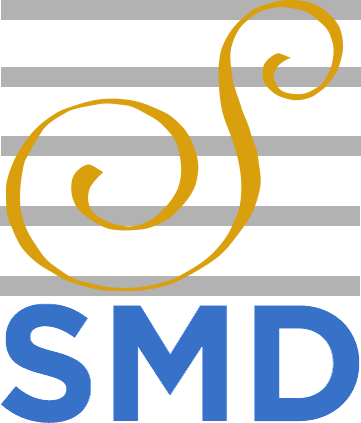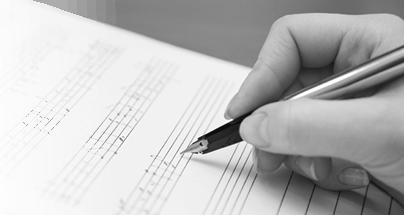Tips for preparing scores and parts using the Sibelius program
by David Murray
In my almost 30 years in the music publishing business I have seen the art of music engraving go through many changes. The most notable being the computer based music writing programs. First there was SCORE, Finale and a host of lesser used programs. Then along came Sibelius. It is by far the best, and fastest out-of-the-box music notation program currently available to meet publication standards. My observations are not that of a composer, but as a music editor preparing works for publication.
1. Modifying default settings
The Sibelius 7 program comes with default presets that are certainly usable, but can be improved upon with some small adjustments. These can then be saved in a “House Style” and called into any existing or newly begun file.
Below are a list of recommended default settings that should be changed in “Engraving Rules.”
Accidentals and Dots
Check ONLY the following boxes (uncheck others if necessary):
- Show cautionary accidentals where accidental...
- Show auto cautionaries in all octaves
- Restate accidental when seen in a new voice
Cautionary accidentals are in my estimation over used and clutter the spacing of a score. The rule is simple and has been around for a long time. “Accidentals affect only the note they precede and are carried through the measure and canceled by the barline.” Print this in the beginning of your score and there should be no doubt what the accidental policy is.
Ties 1
- Uncheck - Use on single notes
Ties 2
- Uncheck - Use on single notes
This setting places all ties between note heads where they cannot collide with slurs and articulations.
2. Dynamic placement and attachment
Magnetic Layout should always be enabled. In the odd instance where something is out of place because of Magnetic Layout settings it is possible to disable this function for only that item by selecting the item, mouse right-click and select “Magnetic Layout” “off”.
It is vitally important to insure that all dynamics (text and lines) are attached to the proper staff. If not, the result will be that they do not extract (or appear) in the correct part. The same is true for any “Staff” item (ie. text, lyric, symbol, line etc.). This can be achieved by using the default placement command (Ctrl+Shift+P). Dynamics (Expression text and lines) should be aligned on the same plane for each staff in every system.
3. Score and Part layout
Determining the proper staff size is crucial to the readability of your score. Below are some basic staff size settings. These can be adjusted in either direction depending on what fits best. Settings are givein in inches.
Scores
- Orchestra or Band Score (pg. size 11”x17”, 20-25 staves) – staff size .20” down to .17”.
- Piano Score (pg size 8½”x11”) - staff size .25” down to .22”. (Image is increased by 6% when printed at 9”x12”)
- Vocal/Choral - staff size .24” down to .20”.
- Chamber Music (pg size 8½”x11”)
Chamber music scores that are not required for performance (ie. string quartet, brass ensemble etc.) use can use a smaller staff size to consolidate pages and lower the retail price.
Parts
Parts should be uniform and consistent. The number of measures on any given system should not vary wildly from line to line. Musicians process music off the page differently, but it is safe to say that more music per line is easier to process than less. Adequate time for page turns is a variable that needs to be carefully considered. Depending on the instrument some players take longer to make a page turn than others. This and the speed of the music need to be factored into where page turns can happen. ALL right hand pages (recto) must have adequate page turn time to insure that it does not interfere with the performance.
4. Summary
The days of composers handing their manuscript off to an editor for preparation for engraving are pretty much gone. It is now the responsibility of the composer to create materials that meet these same standards. When this doesn't happen, the quality of performance suffers and the amount of wasted rehearsal time expands. The standards for music notation and engraving that have developed over the years works for most music written today. This consistency is what helps all musicians pull the music off the page and make it live in the concert hall.

